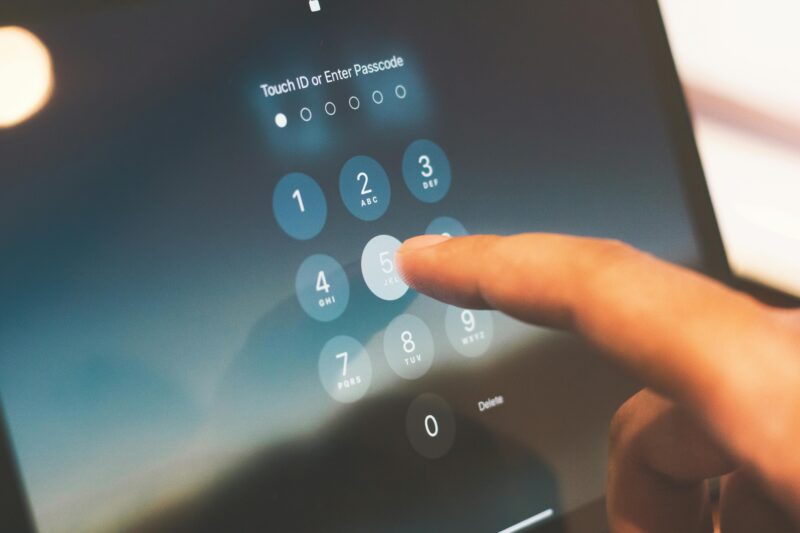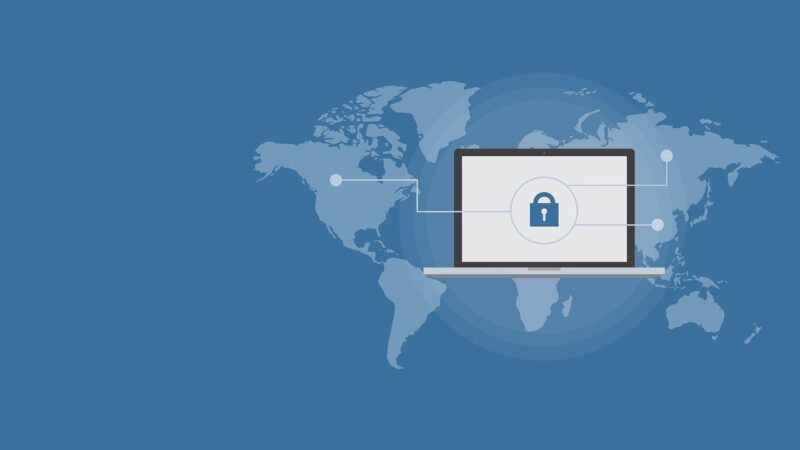In the post-pandemic period, many companies are embracing remote work and, with it, cybersecurity best practices.
Since you’re managing individual employees working from home, you must update your company’s cybersecurity measures to keep your data safe. Your crucial company data could easily get to unauthorized persons if you don’t have the right measures in place to protect your data.
Here are four reliable cybersecurity best practices you should embrace for a safe remote work experience:
1. Secure Access and Authentication

Effective authentication helps with streamlining access to your company’s accounts to authorized persons.
You can develop a system that verifies the identity of a given account’s user(s) so that unauthorized persons can be locked out.
Successful implementation of secure access and authentication should accommodate this three-step plan:
a). Build Strong Password Policies
The basic and most effective way to protect your data is to have strong passwords.
But what are some tips for creating a strong password that defies the odds of hacking?
- A strong password should have a minimum of 12 unique characters that are mostly complex.
- Choose words that aren’t in the dictionary or the name of your organization, employees, or famous characters associated with your company.
- The password should be easy for you to recall but extremely challenging for anyone else to guess.
- Ensure your employees don’t reuse passwords.
- Change passwords after some time (But don’t do it too often).
- Put in place systems for password management to minimize reckless exposure of passwords by employees.
- Forbid sharing of passwords
b). Emphasize Multi-Factor Authentication (MFA)
Multi-factor authentication will take your data protection game a notch higher, especially for your remote team. Rather than the usual username and password, MFA will demand one or more additional factors to grant account access.
Employees working from home are more exposed to security threats, and having an MFA in place could help secure your accounts when passwords are compromised.
Third parties attempting access to these accounts will only succeed if they can identify themselves through MFA.
You can enforce the use of MFA factors like smartphone taps or thumbprints to increase confidence in your company’s cybersecurity practices.
c). Use Virtual Private Networks (VPNs)
A virtual private network is crucial for remote work as it keeps your employees’ identities private regardless of the device they use.
Your company’s sensitive data will be safely transmitted through a reliable VPN, which will block unauthorized access from hackers, internet service providers, and the government.
Train and remind your employees to always have the VPN running whenever they share sensitive company documents or passwords with colleagues. This way, you can rest assured that your data is safe even when your employees work thousands of miles from the company.
2. Device and Network Security

Another way your remote workers can successfully complete tasks without fear of security breach is to implement effective device and network security measures. Cyber attacks emanate from all angles, and devices and networks are key vulnerable areas to examine.
Some of the key ways to secure your devices and networks include the following:
a). Regular Software Updates
If you’re using VPNs or antiviruses to secure your data, it’s important to update your company software on time. Security software updates come with new and improved functionality to help lock out cyberattacks that previous versions were vulnerable to.
These updates also include features that enhance speed and efficiency, making it easier for your remote team to work within set schedules.
The best way to do this is to turn on auto-updates so the software updates automatically when new versions are released. You can have your IT team check for compatibility issues to ensure things are running smoothly after the updates.
b). Endpoint Security Solutions
Endpoint security is crucial for the success of remote work because it offers solutions to the never-ending cyber threats on devices, servers, and workstations. As employees settle for remote work, they’ll likely use different devices to access your company’s network and data, exposing you to attacks from all angles.
With endpoint security solutions, you can easily prevent these attacks by protecting your employees’ devices or servers used for work. This is very important because some cybercriminals might find it harder to attack your main server and choose the more readily available endpoint for ‘easy entry’ into your systems.
c). Home Network Protection
Home network protection is a feature in a user’s home network that protects all the devices connected to their network from cyberattacks. This system is connected to the user’s app that provides real-time alerts concerning potential violations, vulnerabilities, and when new devices are connected.
With this protection, your employees are immediately alerted when someone else accesses your company’s accounts through their devices.
3. Data Protection and Privacy

Data protection and privacy are often used interchangeably but have different meanings. While data protection entails providing tools and policies to restrict access to data, data privacy showcases who is entitled to data access.
As a company owner, you must provide the right tools and policies to protect your data and clearly define the consequences of breaching data privacy.
Some of the strategies for achieving data protection and privacy for your remote team include:
a). Encryption for Data in Transit and at Rest
Data encryption is a great way to protect your data in transit or at rest.
Encrypting data at rest means protecting it while in storage to limit access from unauthorized persons. This includes data stored on hard drives, flash disks, or laptops that your remote employees may need from time to time to run their roles effectively.
Data in transit (motion) is data that’s actively moving from one point to another during a company’s day-to-day functioning. Encrypting data in transit protects it as it moves from the sender to the receiver so attackers can’t ‘hijack’ it while in motion. The data gets decrypted and transformed to its original format right before the receiver opens it.
Attackers know that many companies emphasize data protection in transit and will easily target data at rest. This is why it’s important to have both data protection strategies in place to optimize security.
b). Avoid Public Wi-Fi for Sensitive Tasks
You can never be sure your remote employees will not use public wifi during their work-from-home endeavors. So the best thing to do is teach them how to manage your company’s data in case they use public Wi-Fi. Ask them to:
- Use a VPN
- Only open “HTTPS” websites
- Avoid opening sensitive information
- Avoid sharing files
- Use an antivirus software
- Use 2FA
- Remember to log out once done
While your team should refrain from using public Wi-Fi for work purposes, teaching them these tips will ensure your data remains safe if they do.
c). Secure File Sharing and Cloud Storage
Remote work tends to rely heavily on shared file systems, which, when poorly done, can expose data to middlemen and snoopers. With this in mind, many companies are shifting to cloud storage for seamless sharing and secure storage.
Cloud storage allows multiple users within an organization or team to simultaneously access a common set of files. With the best cloud storage security practices, you can rest assured that your data will be safe even with simultaneous access from multiple members of your remote teams.
4. Email and Communication Security

With about 3 billion phishing emails sent out every day, organizations must tighten their grip on email and communication security. Here are some crucial tips to consider:
a). Beware of Phishing Attacks
A phishing attack is a fraud in which the attacker contacts you via email or text with the intention of obtaining personal or payment information. They can then use the information to steal from you or sell it to other attackers who are much more in need of your data.
These attacks usually occur when an email that appears to have been sent from a trusted source comes to your inbox. The email may contain an attachment or a link that may install malware into your system once you click it.
The links could also lead to malicious websites that require one to provide personal information like user IDs, passwords, and payment details.
To remain safe, train your remote team on effective tips for identifying suspected phishing attacks. Some of these tips include:
- They should verify if your company has an account with the company or group that contacted them.
- They should never go to your company’s bank website through links in these suspicious emails.
- Regularly check your accounts to see if there are any irregularities with online transactions.
- They should only enter sensitive data on secure websites that start with “https://”.
- To be suspicious of emails that have a generic greeting.
b). Email Encryption
Email encryption is an important aspect of the overall email security process. It helps prevent unintended and unauthorized individuals from reading emails coming into your remote employees’ inboxes. It converts the originally sent emails by scrambling them into an unreadable format so that the authorized party can only read the email by decrypting it.
You can try various email encryption options, such as Transport Layer Security (TLS), Pretty Good Privacy (PGP), and Secure Multipurpose Internet Mail Extension (S/MIME). It’s much cheaper and safer to pay for an email encryption service than risk a data breach or cyber attack.
c). Secure Communication Tools
You’re sure to have a lot of official communications with your remote team, whether through telephone calls or chat platforms like WhatsApp, Telegram, and Messenger.
Usually, the decision to use either of these platforms depends on the urgency of the message you want to rely on and how frequently your employee is available on these platforms.
However, an important factor to consider is whether the platform you choose for communication is safe. The best tools for secure communication have end-to-end encryption (E2EE) that keeps in-transit data safe. With E2EE, third parties can’t access and intercept data while moving from one system to another.
Wrapping Up
The continual rise of remote work indicates an ever-changing workplace tradition, and it has its fair share of advantages.
Employees continue to enjoy flexibility, a better work-life balance, and the freedom of working anywhere worldwide, provided they have a secure internet connection.
Be that as it may, remote work is still evolving, which poses a great challenge to its implementors, especially those with limited resources.
If you’re just getting started with your remote work journey, you must check if you meet the four-point plan above.
Failure to meet even one of the requirements could prove detrimental later on, but you can get started with either option and improve along the journey.